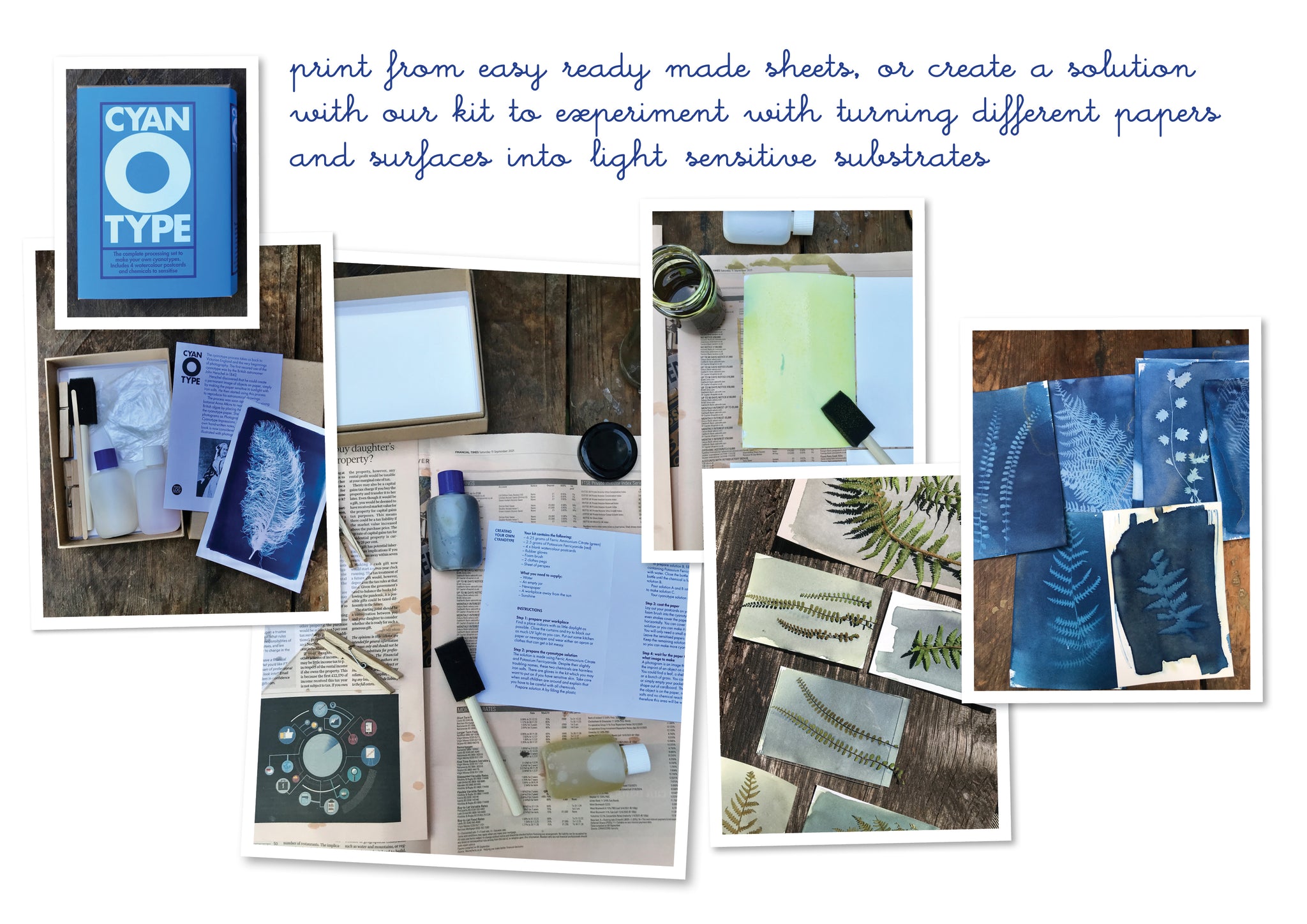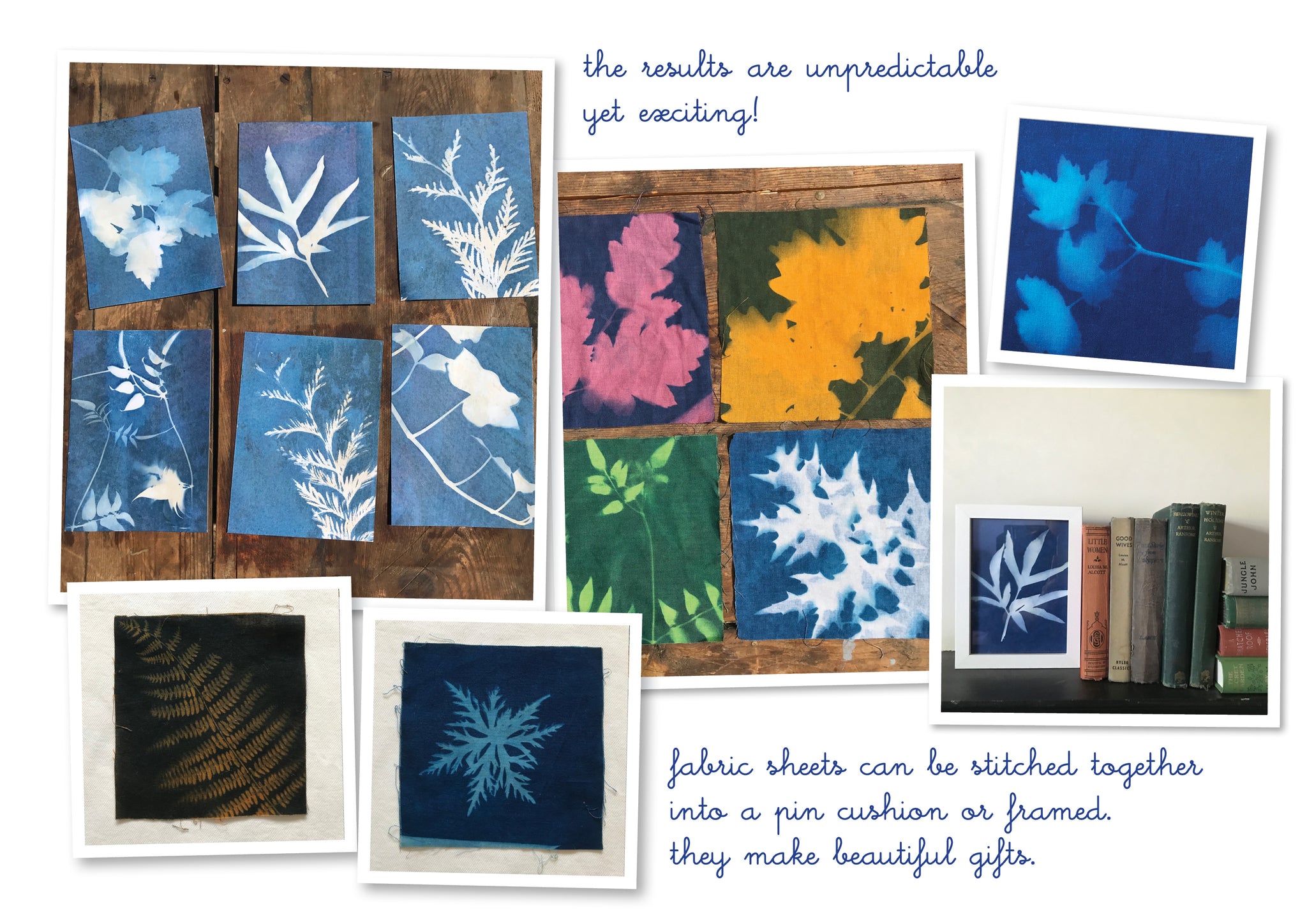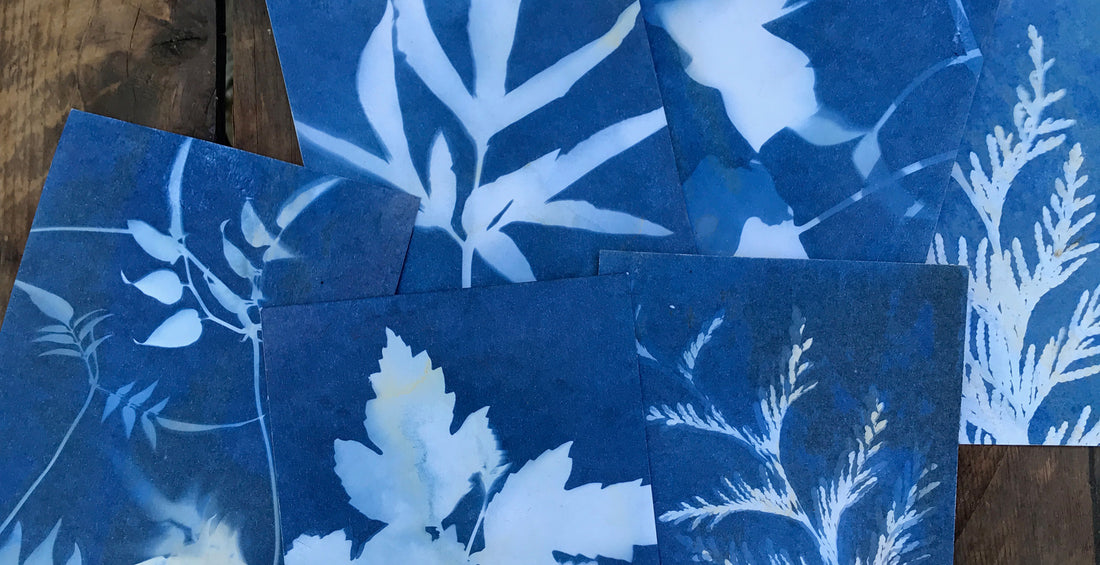creating cyanotype prints is a fun family activity that encourages children to get close to nature, observe, focus and be patient.

by placing objects on specially formulated light-sensitive paper or fabric, and exposing them to sunlight, beautiful prints can be made. these are often called ‘sun prints’. flowers, leaves, feathers and seaweed make lovely images.
it helps if you choose a sunny, still day. go for a walk with the children, take a basket and hunt for natural treasures such as a lost feather or interesting shaped leaves - fat ones and thin ones, fronds, ferns, flowers
and seeds.
when you get home, lay out your finds and start composing. simple shapes are often the most effective. think about scale, pattern, graphic shape and repetition.
remember to pick wild flowers mindfully. follow the ‘one in twenty rule’ – for every one picked, there should be twenty present. don't uproot plants, and pick in moderation. don’t pick flowers from public parks, community gardens and roundabouts, national trust properties or nature reserves.

anyone interested in chemistry? our cyanotype kit, for the more advanced experimental photographer, contains the requisite elements to mix a light sensitive solution which can be applied to all sorts of surfaces.

some sources recommend laying glass on objects to keep them flat and still. but we like the serendipitous results from minute movement, blurring and variation in depth of 3d objects.

the making is the best part, it keeps children away from screens and occupied for hours - collecting, composing and waiting. we call it ‘slow play’. the prints make lovely gifts too. we give them for mother’s and father’s day, and to teachers and vip grown-ups. our fabric sheets can be stitched together as a patchwork or turned into little cushions.

history
cyanotype was an early photographic process popular in victorian times, but its popularity diminished as photography improved. it is seeing a resurgence now as experimental photographers and novices explore its potential.
the cyanotype process, also known as the blueprint process, was discovered by the english scientist, astronomer and botanist, sir john hershal in 1842. he used the technique as an inexpensive way to reproduce notes and drawings – or blueprints.
his friend, the botanist anna atkins, adopted the process to illustrate her work on ferns, feathers and algae. she used it to produce one of the world’s first photographically illustrated book. anna atkins is still considered a leading light in shaping our appreciation of the natural world.

shop the blog





